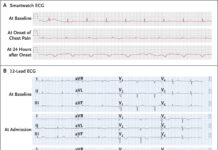Paper-Eating and Inhaling Kerosene- A Disease Or Habit?
· Xylophagia, the paper-eating disorder, is a type of pica.
· The unusual craving for eating inedible or edible, but non-food and non-nutritive substances is called Pica.
· It is the most common eating disorder in children and individuals with developmental disabilities.
· Nutrient deficiency can lead to pica.
A 16-year-old female came to the clinic with a 3-year history of paper-eating and inhaling substances like kerosene. Neither the patient nor any of her family members had a history of any medical or psychiatric diseases. There was no history of substance abuse either. The patient had normal growth and development.
The family members of the patient had a habit of chewing betel nut, so she secretly started chewing betel nut regularly without her parent’s knowledge. Later on, when her parents got to know about her new habit, she was forbidden from betel nut use.
Her friends reported that she was observed eating the paper from her notebook in the school. After swallowing one paper, she felt immense pleasure, so she continued eating paper without any adverse outcome. She also reported eating three pieces of paper without anyone’s knowledge. Soon she developed a habit of chewing four to five A4 size papers daily at school.
She reported feeling no urge to nip her habit in the bud until her parents brought her to the hospital.
She also reported that once when by-chance she smelled kerosene, she grew fond of the smell and started smelling it daily without her family knowing about it. Kerosene’s smell relaxed her and helped her escape from reality. She would feel detached after inhaling kerosene for about 3-4 h.
She was addicted to the smell of kerosene over the course of 6 months, so much so that if she would miss a day, she would feel restless, distressed, uninterested, and depressed at school and the house until she could inhale kerosene. While craving for kerosene, she would have a strong urge to eat papers, eating approximately 10 papers per day. She would run after the vehicles to inhale the smell of kerosene.
Effects on her psychosocial behavior:
The patient started having problems with concentration. Her academic performance was deteriorating, and she had lost interest in household chores. The family reported that she would get aggressive and unusually argumentative along with throwing tantrums, such as throwing things at her parents and trying to harm herself.
Physical examination revealed an oriented, cooperative girl who was conversing normally. There was no psychiatric abnormality on the examination.
A systemic review and the rest of the physical examination were normal, and so were the serological investigations. A peripheral blood smear ruled out the suspicion of lead poisoning.
She fulfilled the criteria of pica (xylophagia) and mental/behavioral disorder secondary to the use of volatile solvents.
Management:
She had an insight and was ready to receive treatment. The treating physicians educated and counseled the family. With consent, her healthcare team hospitalized her and started on SSRI (paroxetine). They added clonazepam for her withdrawal symptoms.
After 2 days of hospitalization, the withdrawal symptoms resolved. She was started on baclofen to control craving. Supplemental injectable multi-vitamin preparations were also started.
Cognitive behavior therapy (CBT) was also employed for stress reduction, coping skills, challenge distressing thoughts, and preventing damaging behaviors. She improved substantially after 6 months of CBT.
Her doctors discharged her after 12 days of hospital stay as her xylophagia and kerosene inhaling habits had resolved. Her doctors advised her to continue CBT, medications, and follow-up.
References:
Gowda M, Patel BM, Preeti S, Chandrasekar M. An unusual case of xylophagia (paper-eating). Ind Psychiatry J. 2014;23(1):65-67. doi:10.4103/0972-6748.144972




